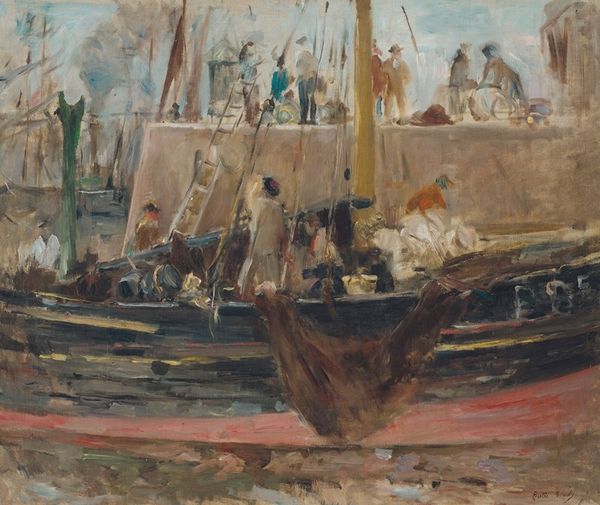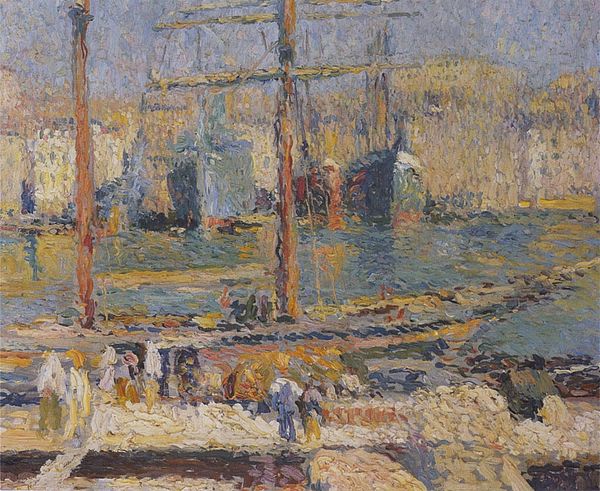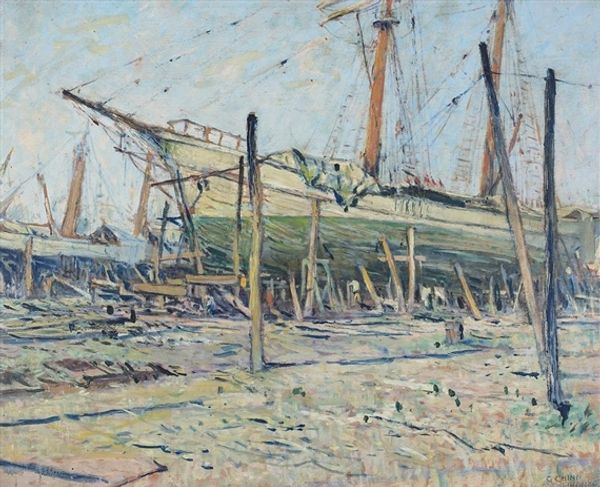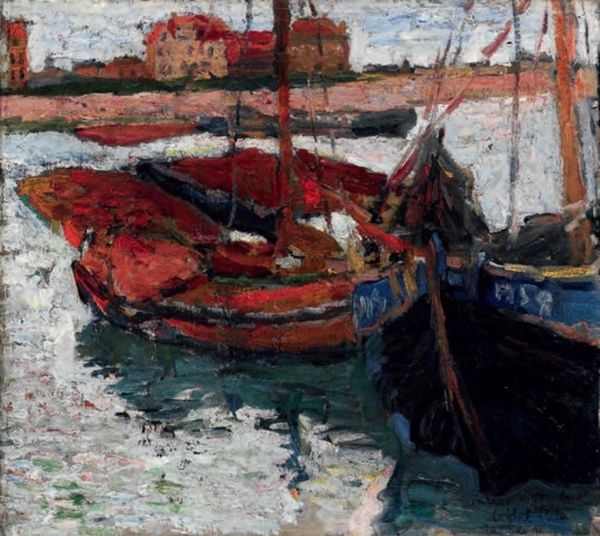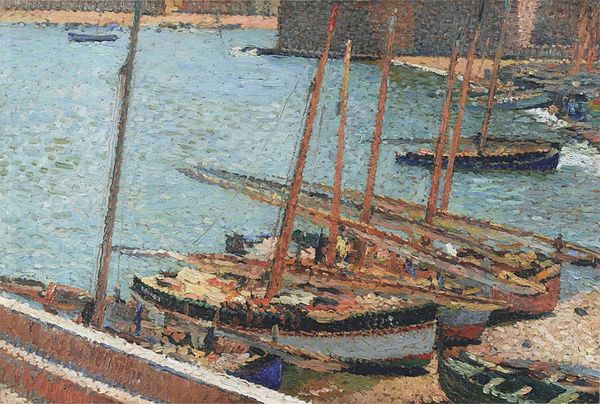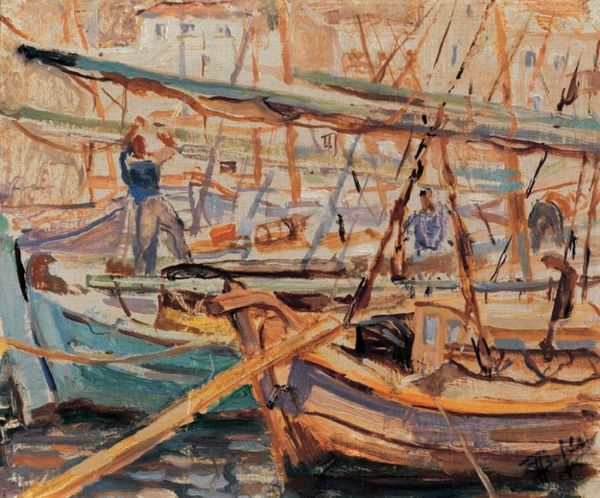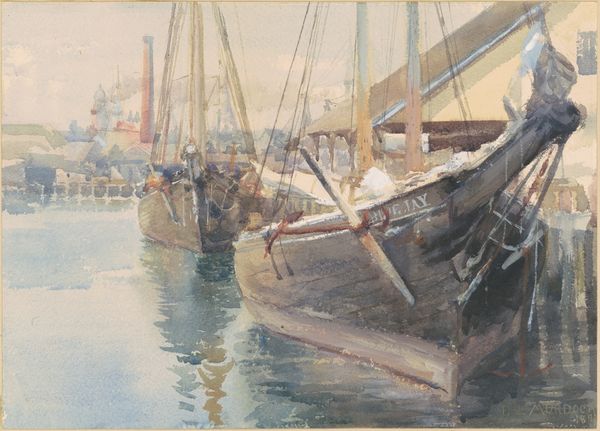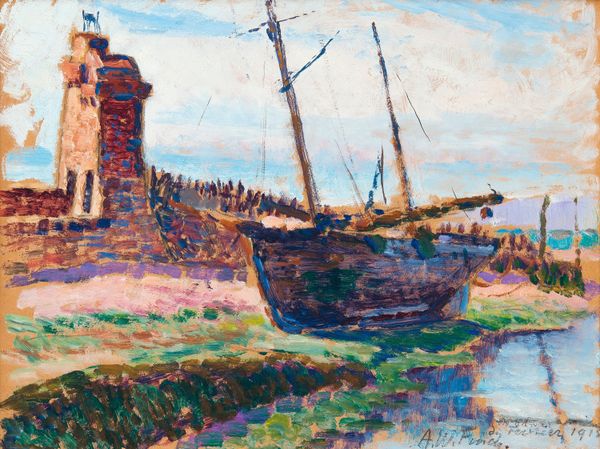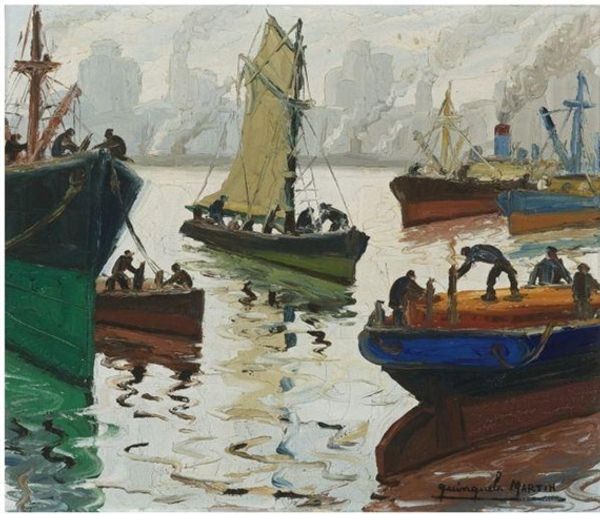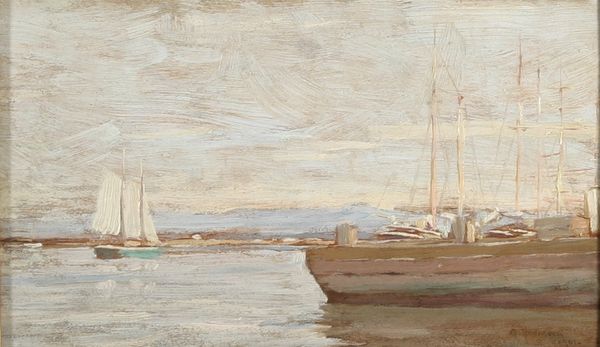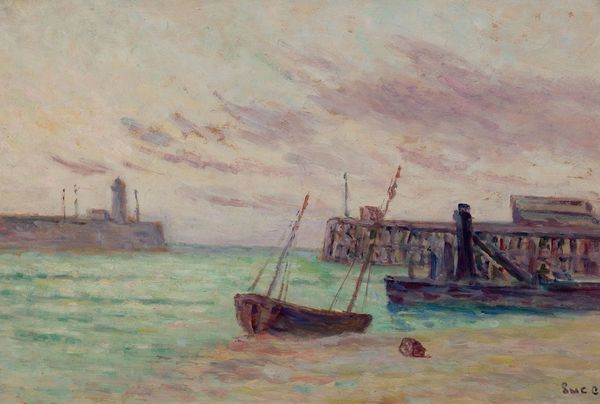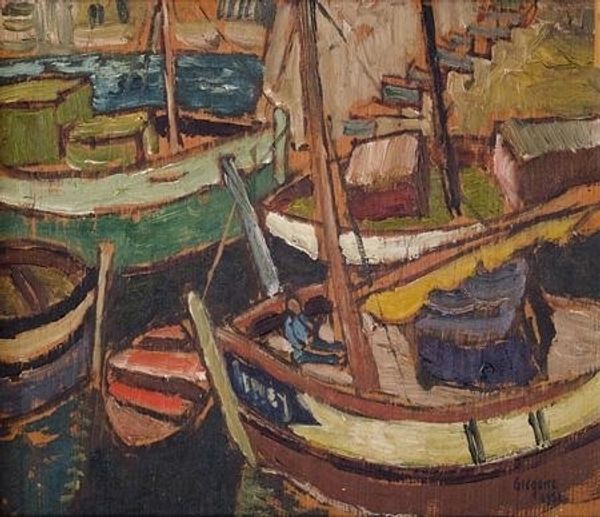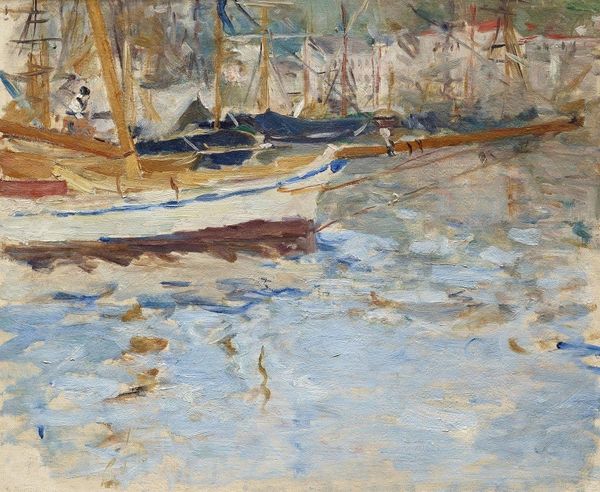
painting, oil-paint, impasto
#
painting
#
oil-paint
#
landscape
#
painted
#
oil painting
#
impasto
Copyright: Leonid Muchnyk,Fair Use
Curator: Look at the brushwork here. It is with visible strokes of oil paint that Leonid Muchnyk gives us "City Sketch". Editor: My first impression is one of quiet industry. The muted tones create a still atmosphere despite what I assume is a busy dockyard. The impasto really animates the water, doesn’t it? Curator: Absolutely, there's a stillness, yet simultaneously a subtle feeling of precarity—a community always in flux as ships come and go. These docks have always been a site of labour, and of migration— the start and end of journeys for many people across many decades. Editor: The clustering of vessels is almost womb-like, don’t you think? Ships have so long represented security, a means of passage. They offer tangible cultural symbolism. I detect in these sturdy hulls the spirit of past voyages—emigration, trade, even exile. Each vessel is packed with narratives that are somehow etched into their very forms, their design a symbolic echo of the communities they service and create. Curator: I find your reading fascinating. I tend to focus on class dimensions. For some, ships represented a passage to freedom, a means of social mobility. But for many more, shipyards such as this one were spaces of intense physical labor and dangerous working conditions. I always consider who had access to the 'freedom' afforded by travel and trade. Whose labor underpinned this global movement of goods and people? Editor: Of course! Ships are a testament to engineering, and this aesthetic appreciation also brings to mind exploitation, the subjugation of entire cultures and groups that is sometimes hard to square. Do you notice how he uses these greys and whites? They soften the impact of hard industry. Curator: The almost hazy rendition certainly softens what we know to be true of such places: not only as busy ports but of harsh conditions, environmental degradation, and even potential conflict. Editor: Indeed. And as we examine art like this, perhaps we also need to assess what historical meaning it may invoke or, worse, suppress. Curator: It's this perpetual critical assessment and acknowledgement of layered meanings that enables artworks to remain both relevant and challenging. Editor: I agree, recognizing both symbolic interpretations and also lived reality allows us a more truthful understanding, doesn't it?
Comments
No comments
Be the first to comment and join the conversation on the ultimate creative platform.
